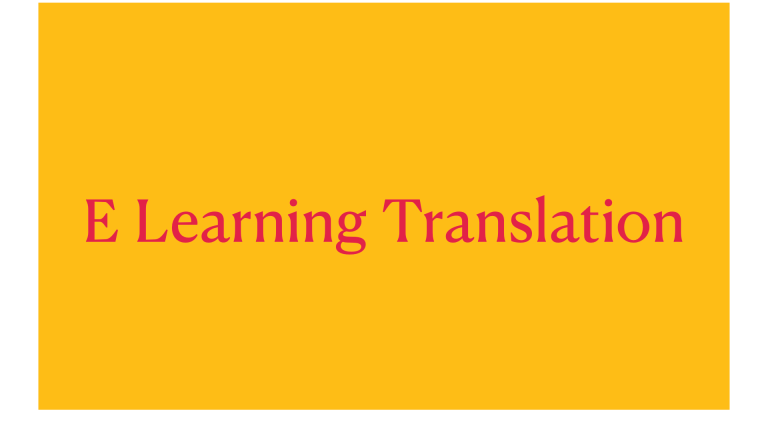Suppose you are a doctor in France struggling to figure out a new medical device manual written in Japanese. A German engineer reading a complex blueprint that was created in English.
The error might come from a single mistranslation which could cause various problems and in severe cases safety risks as well as regulatory compliance issues. This is where technical translation comes in handy.
This is because, unlike the general translation, it deals with Specialized Terminology, Technical Documentation, and Subject Matter Expertise to ensure the highest degree of accuracy between the Source and Target languages.
From medical research papers to aerospace manuals, technical translation assists industries in operating globally. But what makes it different?
Let’s find out!

What Is Technical Translation?
Technical translation converts hard-to-understand industry-specific content, such as engineering guides, software documentation, and legal patents, from a Source Language to a Target Language.
Unlike simple text translation, technical translation implies:
- Relevant field knowledge at most, but at the expert level or significantly higher.
- Adding words and editing to stay consistent with established vocabulary.
- Checking the documents to keep trivial errors aside and maintain high accuracy.
A small mistake in a user manual, legal patent, or safety document can cause big problems like losing money, facing compliance issues, or even accidents.
For Example, If a car manufacturing manual misapplies a technical term, mechanics from all over the world could improperly install the parts and it would cause safety hazards.
Who Needs Technical Translation?
Did you know that 72% of consumers are more likely to buy a product if the manual is in their native language? Technical translation is important not just for large corporations but also for every business or organization that is involved in international markets.
- Multinational Companies – Need translated business, legal, and safety documents.
- Medical & Pharmaceutical Firms – Translate clinical trials, drug leaflets, and research papers.
- Tech & Software Companies – Localize user interfaces, coding documentation, and IT manuals.
- Legal & Patent Offices – Translate patents, contracts, and compliance reports for global markets.
- Manufacturing & Engineering Firms – Convert blueprints, instructions, and safety guidelines.
Improper localization can lead to miscommunication, legal penalties, and operational issues for these businesses.
Industries That Rely on Technical Translation
Here are the top industries that depend on technical translation:
- Medical & Pharmaceutical – Clinical trials, medical research papers, patient records.
- Engineering & Manufacturing – Blueprints, user manuals, safety guides.
- IT & Software Development – Software interfaces, coding documentation.
- Legal & Patents – Intellectual property documents, contracts.
- Automotive Industry – Technical specifications, repair manuals.
- Energy & Environment – Renewable energy studies, compliance reports.
- Aerospace & Defense – Aircraft manuals, military documentation.
Types of Technical Documents That Require Translation
The technical content of different industries is unique, and it often needs to be translated professionally.
Here’s a list:
1. User Manuals
Operating guides for machinery, medical devices, and electronics.
2. Patents & Legal Documents
Intellectual property rights, international trade contracts.
3. Software & IT Documentation
UI/UX strings, coding instructions, and cybersecurity reports.
4. Scientific Research Papers
Clinical trials, research findings, and lab reports.
5. Engineering & Technical Reports
Structural analysis, blueprints, feasibility studies.
6. Manufacturing Documents
Safety compliance guidelines, and production line instructions.
7. Automotive Repair Manuals
Technical servicing instructions, and vehicle diagnostics.
Each document needs to be translated with technical accuracy and Subject Matter Expertise to prevent severe problems from occurring.
Key Challenges of Technical Translation
Technical translation, despite its importance, possesses its unique challenges:
1. Specialized Terminology
Terminology Management needs to be implemented for translating specialized industry-related terminology to ensure that the accuracy of the translation is preserved.
2. Complexity of Documents
Technical information is usually quite voluminous and might even need to be read by a Subject Matter Expert.
3. Maintaining Consistency
The use of Translation Memory tools helps to standardize the use of specific words and phrases throughout different documents.
4. Regulatory Compliance
Some industries (e.g., medical, legal) may need compliance with local laws and standards to be ensured.
5. Adapting to Multiple Languages
Machine Translation can assist, but human Quality Assurance is necessary to ensure precision.
6. Cultural & Linguistic Differences
Localization is not only needed to translate the text from one language to another, but it is essential to adapt content culturally and not just linguistically.
For Example, The same engineering term may have different meanings in American English vs. British English, hence requiring careful localization.
The Technical Translation Process
The technical translation process follows multiple steps to ensure quality and accuracy:
Step 1: Understanding the Source Content
Identify Specialized Terminology and Industry-Specific Language. Analyze Technical Documentation for complexity.
Step 2: Choosing the Right Translation Tools
Use Translation Memory to maintain consistency. Utilize Machine Translation for speed, but refine with human review.
Step 3: Actual Translation
Convert the text from the Source Language to the Target Language. Ensure precise use of Technical Terminology.
Step 4: Quality Assurance & Proofreading
Conduct terminology management and quality assurance checks. Validate translations against local regulations and industry standards.
Step 5: Localization & Final Review
Adapt cultural and linguistic nuances to suit the target audience. Implement final proofreading before publishing.
Being in a world that is globalized today, businesses and professionals have no room to afford misinterpretations in critical documents. Technical translation ensures that: Global industries are smoothly communicating with international partners.
Companies are successfully entering new markets without missing out on compliance standards. Users and professionals can receive clear, accurate information in their first languages.
Need your industry-specific and highly accurate files to get translated? We specialize in: Technical Documentation for Engineering, IT, and Healthcare Multilingual Localization for global businesses Quality-Assured Translations by Subject Matter Experts
Don’t let language barriers slow you down!

